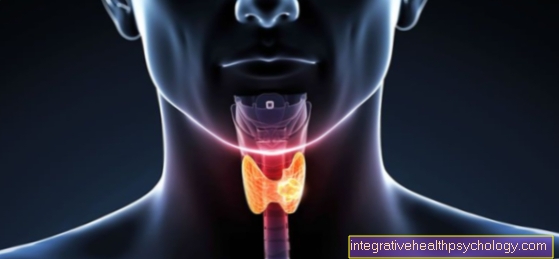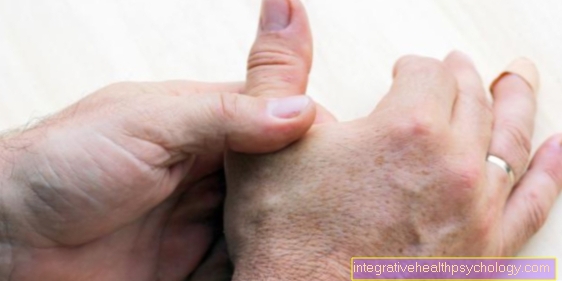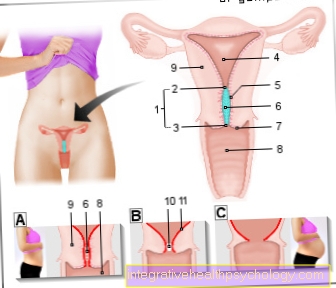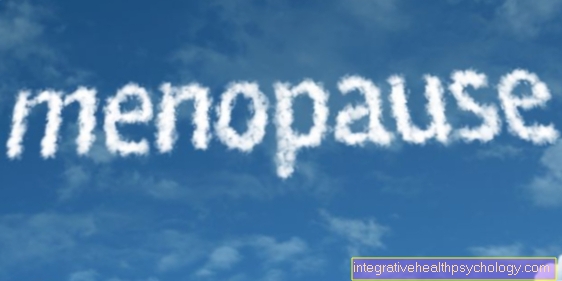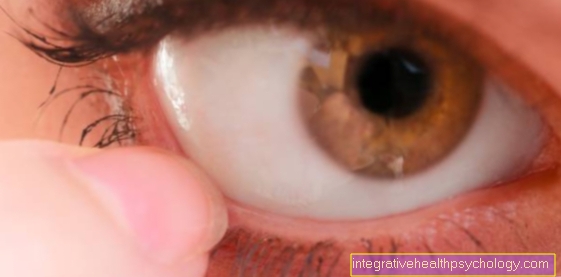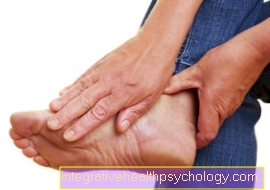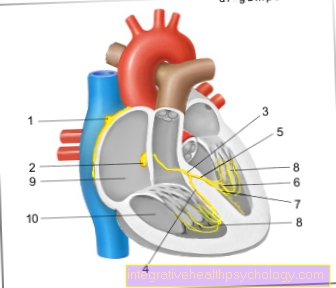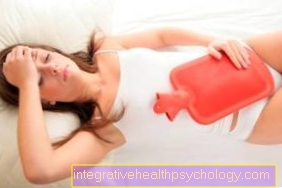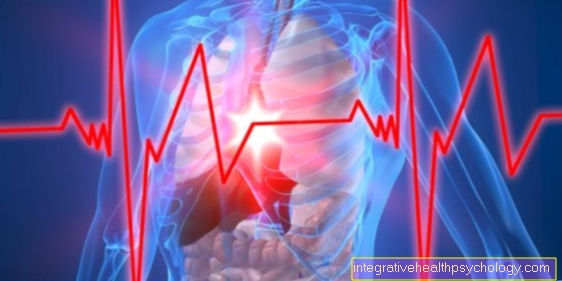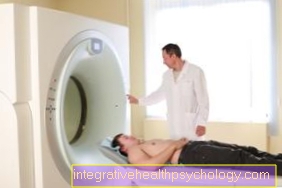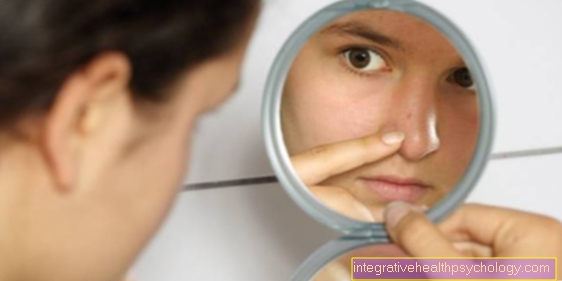Therapy of a mania
Synonyms
Bipolar Affective Disorder, Manic Depressive Disorder, Cyclothymia, Depression
English: Mood Disorders, Dysthymia, rapid cycling
definition
Like depression, mania is a mood disorder. This is usually very upscale ("sky high jubilant") or in the rarer case annoyed (dysphoric). A distinction is made between the hypomanic episode, the psychotic mania and the mixed manic-depressive episodes.
diagnosis
Similar to depression, the diagnosis of mania is usually made by a psychiatrist or psychotherapist who is experienced in the matter. Depending on the severity of the symptoms, the need for treatment can often be seen by people close to the sick person.
The most important instruments for making a diagnosis are, on the one hand, the diagnostic discussion with the therapist and the so-called third-party anamnestic discussion. This means that close people tell the therapist their perception of the development of the disease. (Beginning of the symptoms etc.) The special necessity of such a third-party anamnesis lies in the unreliability of the description of the patient due to a changed self-perception.
Basically, it must be said that treating mania is usually very difficult. Since the patients in many cases experience a real increase in their drive, their happiness and their self-assessment, they see no need to go into therapy themselves. In the course of the illness, the close caregivers can usually not maintain the relationship with the patient. In the worst case, it can also lead to aggressive behavior
therapy
There are three forms of therapy:
-
medical therapy
-
inpatient therapy
-
Electroconvulsive therapy
Medical therapy
The drug treatment of the manic episode has made progress in recent years to the extent that there were also new approvals here in Germany. In previous years it was mainly the so-called mood stabilizers (carbamazepine - e.g. Tegretal®; valproic acid - e.g. Ergenyl; lithium - e.g. Hypnorex ®) and the classic antipsychotics (haloperidol - e.g. Haldol ®) that were used for therapy. The main problem here, however, were the sometimes immense side effects mentioned above. Medication.
Only with the approval of olanzapine (Zyprexa®, Zyprexa® Velotab) did the therapy options move.
Olanzapine (Zyprexa ®) is a so-called “atypical”, i.e. new neuroleptic, which is characterized primarily by its significantly weaker side effects. This can lead to an improved readiness for therapy. The most common side effect of olanzapine / Zyprexa should not be concealed here. Olanzapine / Zyprexa makes you hungry. In most cases, patients get really hungry for sugar and fat. Accordingly, in many cases there is an increase in weight.
You can also read our article on Zyprexa® side effects.
In contrast to the normal starting dose for a psychotic episode (approx. 10-20 mg), you should start with a significantly higher dose in mania (approx. 40 mg) and reduce the dose very slowly as part of the improvement.
Risperidone (Risperdal ®) has also been an officially approved drug for the treatment of acute mania since December 2003. The first results with Risperdal are very promising.
Quetiapine (Seroquel ®) was also approved at the beginning of 2004.
Lithium still finds its justified use in everyday clinical practice. If therapist and patient are equally informed about the possible risks of lithium therapy, this drug has the advantage that it has been proven several times in various studies to build up relapse protection. It is therefore used in prophylaxis, i.e. the prevention of a new phase of the disease.
The above Risks of therapy with lithium lie in the "danger of intoxication", ie the risk of poisoning the patient. The body can absorb lithium to a certain extent. However, if there is too much lithium in the body, i.e. the so-called blood level rises above a certain level (for those interested:> 1.2 mmol / l), the body reacts with symptoms of poisoning, which in an emergency can be life-threatening.
However, in order to avoid precisely this, the drug content in the blood must be determined regularly at the beginning of therapy, during therapy and also when the dose is increased.
Valproic acid and carbamazepine are drugs that are actually borrowed from the therapy of epilepsy (so-called anticonvulsants). In recent years, they have often been used when lithium therapy has not been successful. The problem with this, however, was that in many cases they had no real approval for the treatment of mania and were therefore “off-label” and thus exposed outpatient doctors who prescribe themselves to the risk of having to pay a fine if the health insurance companies noticed that Although the drug helps the sick person, there is no legal permission to treat him with it.
However, since the summer of last year there has also been an approval for valproic acid in Germany, which is good in that it is viewed by experts as the first choice for certain subspecies of mania (mania with psychotic characteristics, or rapid cycling).
Low-potency neuroleptics (promethazine - e.g. Atosil ®, levomepromazine - e.g. Neurocil ®) but also benzodiazepines (e.g. diazepam, oxazepam) have an extremely important role in the treatment of mania. The restoration of regular sleep is known to be extremely helpful in the management of a manic episode. Since both of the above They are often used in groups of drugs that have a sedative effect, i.e. have a dampening and sleep-inducing effect (mostly in combination with other drugs).
Stationary recordings
Due to the low willingness to treat patients, in-patient admission to a psychiatric hospital cannot be avoided in most cases. Unfortunately, in such cases it can happen that the person suffering from mania does not adhere to the agreed ward rules and even leaves the ward against the agreements. If dangerous or harmful behavior then occurs, according to the statutory provisions, the patient may be instructed to a protected ward even against the patient's will. The term “protected” means that the door cannot be opened independently by the patient to leave the ward.
Electroconvulsive therapy
In rare cases it can, similar to the depressionto develop resistance to therapy. This means that none of the selected therapy methods lead to success, i.e. an improvement in the symptoms. In these cases, electroconvulsive therapy is another, well-studied option to get patients out of this agonizing state. To explain the EKT:
ECT (electroconvulsive therapy):
Who doesn't know the pictures of Jack Nicholson in the “cuckoo's nest” when he was given his “electric shocks”? Most patients are rightly unsettled by this and by a lot of hearsay and even more dubious sources of information on the Internet.
Here now the truth as it is practiced in this our country.
First, the patient is put into a state of short anesthesia with muscle relaxation by an anesthetist. A doctor then uses an ECT device to artificially induce a current epileptical attack provoked. This procedure is stress-free and pain-free for the patient due to the short anesthesia. Unfortunately, this method has a very bad reputation (wrongly nowadays). Images from the time when this method was still used almost indiscriminately or as a punishment and without anesthesia are too clearly captured in the mind. Contrary to popular belief, this method does not cause permanent damage. In fact, this method can be described as one of the safest and fewest side effects.
The most common side effects are: Lack of concentration on the day of therapy, possible confusion after awakening from the anesthesia, a headache and nausea.
Nowadays, ECT is usually used (in Germany) in patients with severe depression with psychotic symptoms or with so-called catatonic schizophrenia (see Chapter schizophrenia) who do not experience sufficient improvement under drug therapy. This can improve almost 60% of the patients. The therapy is carried out in 8-12 sessions and may have to be repeated after a few months because, and this should not be concealed here, the relapse rate after about 6 months can be described as high.
In a few patients, the time to relapse is much shorter, so that you may have to take the route of maintenance ECT. EKT sessions are held here at defined intervals (1-4 weeks).

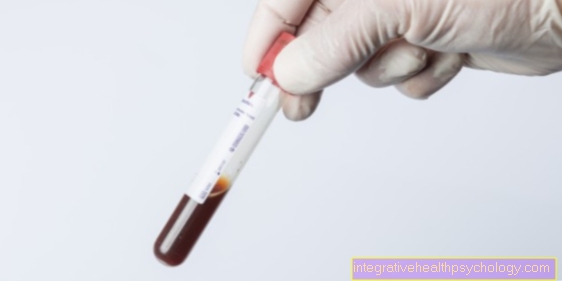


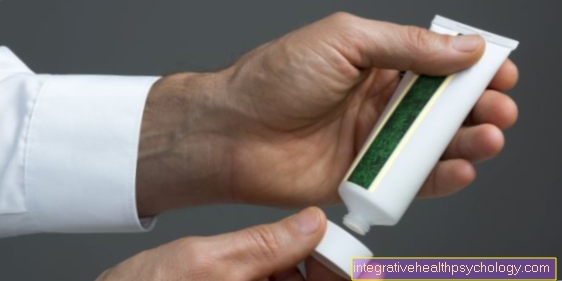
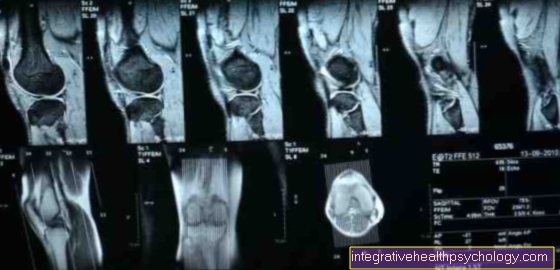
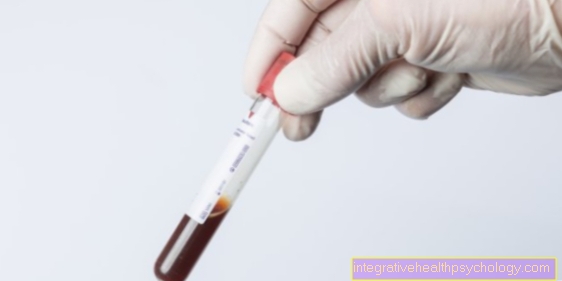


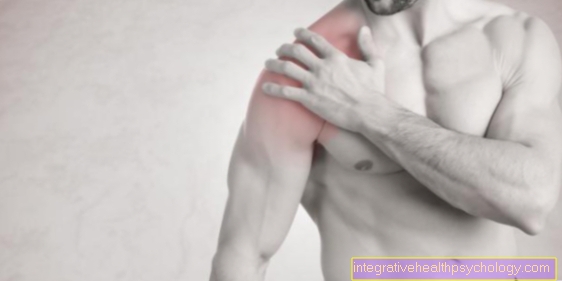
.jpg)
